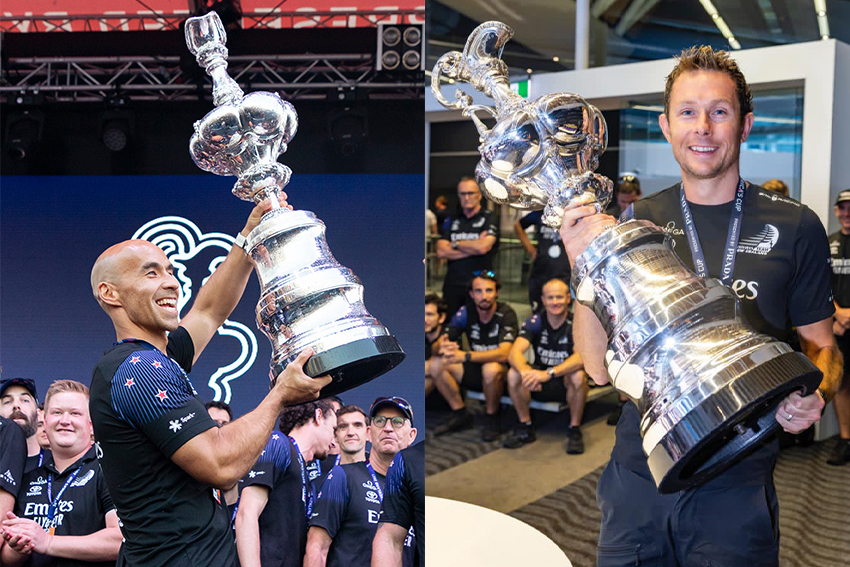AUT expertise behind Emirates Team NZ

Having trained many high-level athletes, AUT Senior Research Fellows Dr Dan Plews and Dr Adam Storey are used to high performance sport but working with Emirates Team New Zealand proved an exceptional experience.
As physical performance specialists, the AUT researchers and postgraduate supervisors, played an integral part in the New Zealand syndicate’s resounding success in retaining the America’s Cup.
Dan was recruited into the team following the 2017 Bermuda cup challenge, when Blair Tuke recognised the need for even greater levels of fitness, strength and agility in the next series. Recommended by Gordon Walker, renowned coach to the New Zealand women’s kayaking team, he was appointed to lead physical preparation of the athletes for the grueling demands ahead.
As an exercise physiologist with a focus on aerobic conditioning, Dan (also the world record holder for the Hawaii Ironman World Championship) shoulder tapped AUT colleague and former Olympic and Commonwealth weightlifting coach, Adam to work on the strength and power development. Physiotherapist Paul Wilson formed the third member of the physical performance team.
Both Adam and Dan have extensive experience with training elite teams from kayaking and rowing to World Cup rugby but found the mix of codes; sailing, cycling (Simon van Velthooven), rowing (Joe Sullivan), swimming and kayaking (Steve Ferguson), combined in one team, created a unique dynamic.
“One of my favourite parts of the role was the that our sailing squad and grinding crew of eleven people, included seven Olympic medalists and 35 world titles. This brought a real mix of perspectives into the training environment and was a great learning opportunity,” says Adam.
For the next three years they worked part time for Team New Zealand, immersing themselves in the world of sailing and learning the demands of the sport and the new breed of boats. Unlike the catamarans of Bermuda, where the grinders used their legs, the demands were back on the upper body.
“Dan worked on getting the grinders aerobically and anaerobically fit and I did the strength and power work,” says Adam. “Previously in Bermuda, only six crew members were on board at any one time. Now we had eleven with eight of them grinders. Much greater human horsepower was needed to keep the boats on the foils.”
Each group had different physical challenges, says Dan. “Sailors and grinders were quite different. We focused on the grinders, but the sailors had to be highly agile and quick to cross both sides of the boat.
“A major challenge was managing fitness training load and fatigue with the requirements of training on the boat, so they weren’t doing too much and maintained fitness. It required a lot of monitoring and looking at their fitness and fatigue.
“Also, the schedules were very sporadic because everything was dependent on the weather or there had been a breakage on the boat. We had to have an aim but be very dynamic about how we got there.”
Adam says, “They were high performing athletes who trained twice a day but also had to work a full day of work in the boat shed on hard manual labour tasks. A lot of other high-performance athletes don’t get exposed to that. They get to recover between those training sessions. Team NZ has a mantra of everyone chips in which I was very impressed by.”
Juggling the role with other jobs and life in general was a major personal challenge says Dan but “to be a part of New Zealand history” was a huge reward. “I’m grateful to have had the experience of working with such a great bunch of guys.”
Adam describes it as a surreal experience. “I’m not from a sailing background originally but I’ve watched the America’s Cup for as long as I can remember,” says Adam. “It was humbling to be a part of it.”
Useful Links:
- Study Sport and Recreation at AUT
- Read profiles of Adam Storey and Dan Plew